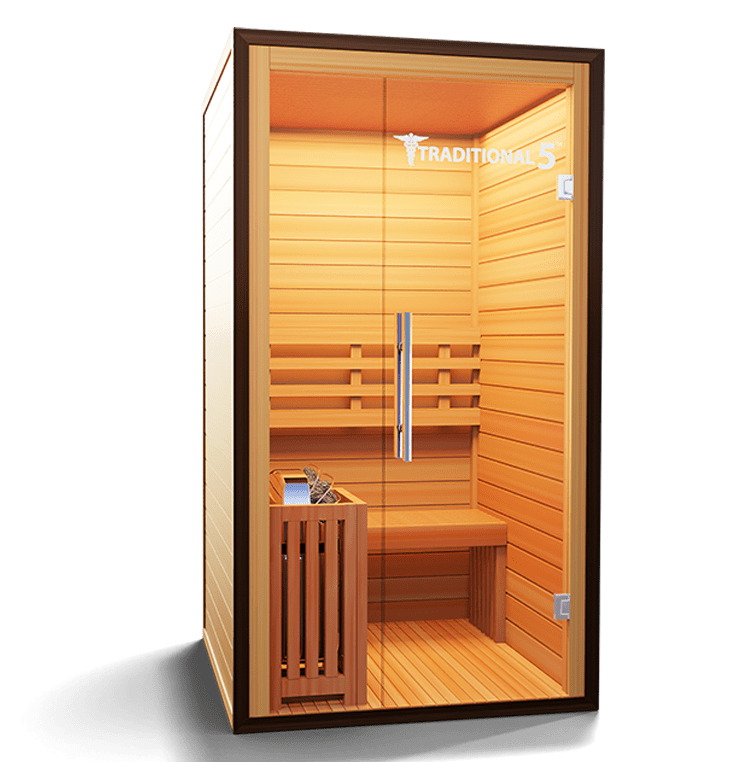The Ultimate Guide To Traditional Sauna
The Ultimate Guide To Traditional Sauna
Blog Article
Some Known Factual Statements About Traditional Sauna
Table of ContentsAbout Traditional Sauna7 Easy Facts About Traditional Sauna ExplainedThe Best Strategy To Use For Traditional SaunaThe Best Strategy To Use For Traditional SaunaThings about Traditional Sauna
Most of the weight lost in a sauna is water loss and is re-gained upon rehydrating. Nevertheless, without an uncertainty sauna can be an essential part of a healthy weight loss program. To consider the distinctions in between typical and IR saunas, I will certainly divide these right into proven, academic, and produced distinctions.Therefore, the most popular point in the saunawhich is at the ceiling directly above the sauna heateris generally between 185 and 190 F. Claims that a conventional sauna surpasses 200 F is just not true and not appropriate for electric saunas sold in the United States. The temperature level for a far-infrared sauna is usually established in between 120 and 140 F; nonetheless, unlike the typical sauna, the objective in and IR room is not to achieve a heat.

When a typical sauna has actually been correctly warmed, the sauna walls are cozy, the air temperature level has accomplished set temperature level and the rocks are super warmed. As an interesting side note, the warmed walls and the rocks are releasing far-infrared heat, incorporated with the heated air, to produce an "wrapping up warm".
Traditional Sauna Fundamentals Explained
When the heat is achieved, the elements cycle on and off to maintain the heat. A lot of traditional sauna individuals appreciate pouring water over the rocks to produce vapor to elevate sauna humidity levels. The benefits of pouring water over the rocks include: making the space extra comfortable, moistening the nasal passages, and enabling the usage of aromatherapy by blending crucial oils with the water.

When the power gets in the body, it creates the body temperature level to boost and eventually leads to sweating. In an infrared sauna it is very important for the emitters/heaters to stay on nearly regularly. Considering that there is no mass of rocks to keep heat, the sauna will cool down if the emitters turned off.
Examine This Report on Traditional Sauna
As mentioned over, the sauna bather in an infrared room desires to position himself before operating emitters to obtain maximum gain from the warm. The heating time for the 2 rooms can be really different, relying on exactly how the areas are utilized. For a traditional sauna, a bather needs to permit 30-40 mins for the room to accomplish a desired temperature and to properly pre-heat the rocks.

A well built sauna will typically accomplish a temperature level of 150-160 F in about 30-40 minutes (Traditional Sauna). For hotter temperature levels, the area may need to warmth for a longer duration. Once the space attains established temperature, the heating unit will certainly cycle on and off, typically running regarding 50% of the time. The shielded walls and the warmed rocks will keep the space warm and at secure temperatures.
To some, 15 minutes was "lost" while the infrared power warmed the timber panels as opposed to warming a body, while others discover a pre-heated space to be a lot more comfy and think an elevated beginning temperature level is essential to start sweating. The size of recommended use for each room is roughly the exact same (10-15 mins per session); however, as a result of the lower air temperature levels and the capacity to feel the impacts of infrared warm much faster than a standard sauna, it is not uncommon for a person to spend an overall of 20-30 mins in an infrared sauna.
The Only Guide to Traditional Sauna

The average expense per kWH of electrical power in the U.S. is about $0.11, so a 4.5 kW heating unit will certainly set you back about $.50 to run for one hour, if the heating unit runs continually for one hour. Generally a sauna heating system will certainly run for 75% of the Website first hour and 50% of subsequent hours on considering that the aspects cycle once the set temperature level is attained.
A 2 individual far-infrared space is generally literally smaller than a conventional sauna, usually concerning 4' x 4' or smaller sized. The IR home heating system is usually 1.5-1.7 kW using a 120 volt 15 amp plug-in service. Considering that the room can be used sooner than a sauna area, we will certainly assume the space is made use of for to of an hour consisting of warmth that site up time.
There is a seldom reviewed distinction in the social experience in between the 2 spaces. While our culture has actually lost some of the social advantage of the standard sauna experience, it can be extremely socially satisfying (Traditional Sauna). From family time in the sauna, to heart-felt discussions with loved ones, to sauna partiesthe conventional site sauna experience can bring about intimate socializing
Traditional Sauna for Beginners
The majority of higher end infrared rooms include tinted light therapy, noise systems and full-glass fronts.
Report this page